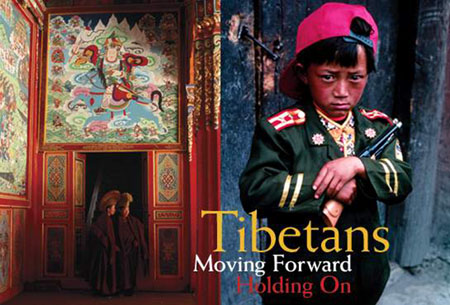Name Tim McPartlin
Department Algonquin H.S. Northboro, MA
Subtitle Modern Tibet
Home
Tibet Today

Read and answer questions on the article by Lewis Simmons called Tibetans: Moving Forward Holding On in the April 2002 edition of National Geographic.
An excerpt of the article, including pictures, multimedia, and web resources
can be found at http://magma.nationalgeographic.com/ngm/0204/feature1/index.html?fs=seabed.nationalgeographic.com
- What decision did Norbu Choden make that transformed his life?
- What is Norbu Choden doing with his newfound wealth?
- Why did the author, Lewis Simmons, expect to find Tibet in ruins in 2002?
- In which 5 Chinese provinces do many Tibetans live?
- Historically, what has been the relationship between China and Tibet?
- What was China's policy in Tibet during the Cultural Revolution?
- What is China's current policy in Tibet? Why is it pursuing the policy?
- List some Buddhist religious practices according to the article.
- Who is the Dalai Lama and what is his hope for the future of Tibet?
- How does one become the Dalai Lama?
- What is the "Develop the West" program?
- What are "laogai"?
- What is the Chinese doing that could be called a "cultural genocide"?
- After looking at the photos on page 34 and 35, what impressions do you get about the people of Tibet?
- Focus Question: Should deliberate attempts be made by the world community to preserve "nomadic" lifestyles?

Students will watch a video called "Ancient Futures: Learning from Ladakh", which details the impact on a remote region as it gets tied into the global economy.
Students can go to a website sponsored by the International Society for Ecology and Culture to find out more about the threats of global consumerism at http://www.isec.org.uk/

Students will watch a 60-minute video produced by Nova in 2003 called Lost Treasures of Tibet. After watching the video and answering the below questions, students will go to the companion website to look at Buddhist iconography at http://www.pbs.org/wgbh/nova/tibet/
- What is the difference between how the Western experts and Nepalese religious leaders view "restoration"?
- What are the parallels between 15th century art in Europe and Nepal?
- What can we learn about the climate and geography of Nepal based upon the building materials?
- What new threats does the monastery now face?
- Why was it fortunate in a sense that the Tibetan Province of Mustang was acquired by Nepal?
This site was created by Tim McPartlin at the NEH Summer Institute "Cultures and Religions of the Himalayan Region," held at the College of the Holy Cross, Summer 2004